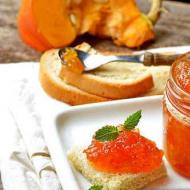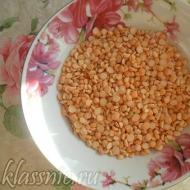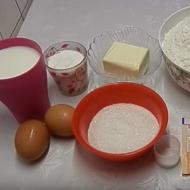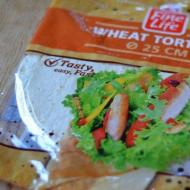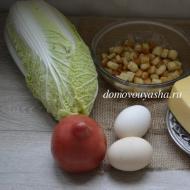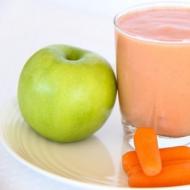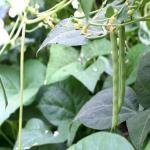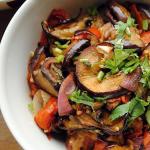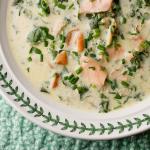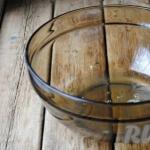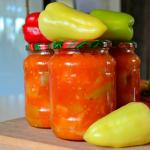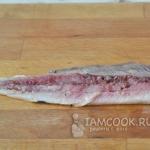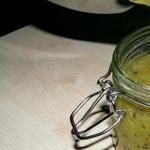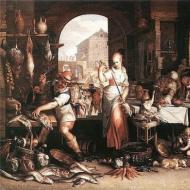
Sequence of preparation of cottage cheese casserole. Cottage cheese casserole is the latest cooking technology. This casserole can compete with any cake in beauty and taste.
All cooking methods are divided into two main types: boiling and frying. In addition to them, there are combined methods and auxiliary techniques.
Combined techniques include:
Extinguishing;
Baking;
Bruising;
Frying cooked foods.
Auxiliary techniques include:
Sauteing;
Blanching.
There are several methods for cooking food. When cooking in the main way, the product is completely immersed in water or a liquid containing water. When poaching, the product is heated with a small amount of liquid or in its own juice. Steam cooking of products is carried out in special steam ovens or steam boxes. Cooking at a low temperature is carried out in a water bath. Cooking at elevated pressure is carried out in boilers with a hermetically sealed lid or in autoclaves.
There are several ways to fry foods. The main way to fry is in a shallow dish (frying pan, saucepan) with a small amount of fat, heated to 150-160°C. Roasting over an open fire is carried out on a spit or on a grill. Closed frying is done in ovens.
Combined processing consists of several types of heat treatment.
Stewing is the simmering of a product with the addition of spices, seasonings or in a sauce. Before stewing, the product is fried. Brewing consists of first poaching the product in an oven with broth and fat, and then frying it in the oven. Boiling followed by frying or baking is used to prepare various puddings and casseroles, as well as to remove extractive substances from meat and fish products (these products are first boiled and then baked with sauce).
Auxiliary techniques include sauteing - frying a product (onion, carrots, tomato, flour) with a small amount of fat before its subsequent heat treatment and blanching - scalding the product with boiling water or steam before further heat treatment. This reduces the destruction of some vitamins and facilitates mechanical cleaning of products.
Cold and hot dishes are prepared from cottage cheese. Cold - with the addition of milk, cream, kefir, sour cream, sugar. Hot dishes made from cottage cheese are prepared boiled (lazy dumplings, dumplings with cottage cheese), fried (pancakes with cottage cheese, cheesecakes), baked (puddings, cheesecakes), steamed (soufflé).
To prepare dishes from cottage cheese, various tools, devices and utensils are used (Fig. 2).
Figure 2 - Tools, appliances and utensils used for preparing cottage cheese dishes
Technological process of preparing dishes from cottage cheese
Cold and hot dishes are prepared from cottage cheese and curd mass. The first includes curd mass with various fillings (raisins, nuts, cocoa powder, etc.), with the addition of flavoring and aromatic substances (vanillin, cumin, etc.), cottage cheese with milk, sour cream, sugar, curd cream, and the second - dumplings, cheesecakes, casseroles, puddings.
It is advisable to serve full-fat (18% fat, 65% moisture) and semi-fat (9% fat, 73% moisture) cottage cheese in its natural form. Bold and low-fat (80% moisture) cottage cheese is recommended to be used for preparing hot dishes. Cottage cheese, which is served in its natural form, is not pureed. To serve in its natural form, you should use cottage cheese only from pasteurized milk.
To prepare hot dishes, pass the cottage cheese through a grinding machine; a small amount of cottage cheese is rubbed through a sieve. When rubbing, losses of 1-2% are formed.
The second hot dishes are prepared boiled (lazy dumplings, steamed pudding), fried (cheese pancakes, curd bars) and baked (puddings, casseroles).
Cheese pancakes are prepared with or without sugar, as well as with the addition of various vegetables (potatoes, carrots) or spices (cumin). Puddings differ from casseroles in a larger number of components (vanillin, raisins, candied fruits), as well as a more delicate consistency, since they contain whipped egg whites.
Technology for preparing curd cream No. 470 (Table 2).
Softened butter is ground with egg yolks and sugar until a fluffy, homogeneous mass is formed. Vanillin dissolved in hot water and salt are added to the pureed cottage cheese, mixed with the egg-butter mixture and gradually whipped cream or sour cream into a thick foam. The finished cream is placed in a serving bowl in the shape of a cone or pyramid, sprinkled with chopped nuts (almonds, walnuts or pistachios) and cooled.
When dispensing, the cream is decorated with slices of fresh or canned fruit or jam (Table 2).
Table 2 - Recipe for curd cream No. 470
Technology for preparing lazy boiled dumplings No. 380 (Table 3).
Add eggs, flour, salt to the pureed cottage cheese and mix. The resulting mass is rolled out into a layer 10-12 mm thick and cut into strips 25 mm wide. In turn, the strips are cut into pieces weighing 10-15 g, dipped in boiling salted water, brought to a boil and removed from the heat. After 5 minutes, remove with a slotted spoon. Served with sour cream.
Table 3 - Recipe for lazy boiled dumplings No. 380
|
Name |
||
|
Wheat flour |
||
Technology for preparing cottage cheese pancakes No. 463 (Table 4).
Add 2/3 of the flour, eggs, sugar, and salt to the pureed cottage cheese. You can add 0.02 g of vanillin per serving, after dissolving it in hot water. The mass is mixed well, shaped into a bar 5-6 cm thick, cut crosswise, breaded in flour, shaped into round balls 1.5 cm thick, fried on both sides, and then placed in the oven for 5-7 minutes.
Sugar-free cheesecakes can be prepared with cumin (0.5 g per serving). The caraway seeds are sorted out, washed, poured with hot water and left for 1-1.5 hours to swell, then the water is drained. Cumin is added to the pureed cottage cheese along with the other ingredients.
They sell cheesecakes in batches of 3. per serving with sour cream, or jam, or sour cream and sugar, with milk, or sour cream, or sweet sauces. Cheesecakes with cumin are served with sour cream or sour cream sauce.
Table 4 - Recipe for cottage cheese pancakes No. 463
Technology for preparing cottage cheese pudding No. 467 (Table 5).
Vanillin is dissolved in hot water (10-20 ml per serving), then semolina is added and, stirring, brewed.
Egg yolks mashed with sugar, cooled brewed semolina, softened margarine and butter, salt, prepared and dried raisins, and chopped nuts are added to the pureed cottage cheese. The mass is thoroughly mixed. Beat egg whites until thick foam and add to the prepared mass before baking.
The resulting mass is placed on a baking sheet greased and sprinkled with breadcrumbs (or in molds), greased with sour cream and baked in the oven for 25-35 minutes.
The finished pudding is kept for 5-10 minutes and removed from the molds. Pudding baked on a baking sheet is not spread, cut into portions.
The pudding is served hot with sour cream, milk or sweet sauce.
Table 5 - Recipe for cottage cheese pudding No. 467
Technology for preparing curd soufflé No. 367 (Table 6).
The pureed cottage cheese, sour cream, milk, flour and yolks are mixed or beaten, the egg whites whipped into foam are added in 2-3 additions, and mixed carefully. The mass is poured into greased molds and steamed.
Table 6 - Recipe for curd soufflé No. 367
Technology for preparing cottage cheese casserole No. 469 (Table 7).
The pureed cottage cheese is mixed with flour or pre-brewed in water (10 ml per serving) and cooled semolina, eggs, sugar and salt.
The prepared mass is spread in a layer of 3-4 cm on a baking sheet or mold greased and sprinkled with breadcrumbs. The surface of the mass is leveled, greased with sour cream, baked in the oven for 20-30 minutes until a golden brown crust forms on the surface.
When leaving, the casserole, cut into square or rectangular pieces, is topped with sour cream or sweet sauce.
Table 7 - Recipe for cottage cheese casserole No. 469
|
Name |
||
|
Semolina |
||
|
Margarine |
||
I Cooking.
Technology for preparing dishes from cottage cheese.
1. Introduction.
Cooking is the art of preparing food.
It has a rich, centuries-old history, reflecting the most ancient branch of human activity, its material culture, which brings together the experience and skills of cooking techniques of peoples that have survived to the present day.
Culinary studies the technological processes of preparing high-quality culinary products in accordance with GOST; culinary products are a combination of dishes, culinary products and culinary semi-finished products.
A dish is a combination of food products (raw materials) that have undergone culinary processing and prepared for consumption as food, taking into account portioning and presentation.
A technological process is a series of scientifically based sequential methods of mechanical and thermal processing of raw materials, as a result of which a semi-finished product, culinary product or culinary product is obtained.
Catering enterprises are intended not only for the production of culinary products, confectionery and other products, but they sell and organize the consumption of these products.
Catering enterprises and entrepreneurs provide people with food consumption services and leisure activities.
The central place in a catering enterprise belongs to the cook. Much depends on his qualifications, professional skills, education and spiritual qualities, including the quality of cooking.
“The cook must have primary or secondary vocational education. Know the recipes and production technology of semi-finished products, dishes and culinary products, the interchangeability of products, changes that occur during the culinary processing of raw materials. Know the commodity characteristics of raw materials, techniques and sequence of technological operations during its culinary processing. Comply with sanitary and hygienic requirements during the production of culinary products, conditions, periods of storage and sale of products. Know organoleptic methods for assessing the quality of culinary products, signs of poor quality of dishes and culinary products, methods for eliminating defects in finished culinary products. Know the basics of therapeutic and preventive nutrition. Be able to use collections of recipes, standards and technological maps when preparing dishes. Be aware of responsibility for the work performed" (from the requirements for a cook, OST - 1-95).
2. Characteristics of the topic.
Cottage cheese is one of the oldest food products; it is useful for everyone. Curd dishes are products of high nutritional value, as they contain proteins (16.5%), fats (up to 18%) (fat cottage cheese), organic acids (lactic acids), minerals (calcium phosphorus), vitamins A, E, group B .
Cottage cheese proteins contain the most important essential amino acids, which are quickly and completely absorbed by the body. Lactic acid affects the microflora of the gastrointestinal tract.
The presence of milk proteins and fat, essential amino acids and calcium and phosphorus salts in cottage cheese makes it a product necessary for the normal development of the human body and has medicinal properties.
“Food that knows no prohibitions”, “a perfect product” - this is how cottage cheese dishes are characterized and it is recommended to use them in children's and dietary nutrition, for teenagers.
Depending on the fat content, the cottage cheese comes with fat – 18% fat, semi-fat – 9% and low-fat – 0.6%. It must meet the standards.
Cold dishes (cottage cheese with milk, sour cream, sugar, cream) and hot dishes (dumplings, cheesecakes, pudengi) are prepared from industrially produced cottage cheese and curd mass.
Fat and semi-fat cottage cheese is used for serving in its natural form, semi-fat and low-fat cottage cheese is used for preparing hot dishes. When preparing dishes, the cottage cheese is scanned, rubbed through a sieve (in a small amount) or passed through a rubbing machine. Losses account for 25% of its mass.
If the cottage cheese contains a lot of moisture, then it is wrapped in a clean, thick cloth and pressed to improve the aroma; grated zest and vanillin can be added to the cottage cheese.
To prepare cold dishes, you can only use cottage cheese made from pasteurized milk.
Based on heat treatment, cottage cheese dishes are divided into boiled, fried and baked.
3. Characteristics of raw materials and methods of primary processing.
Wheat flour – a powdery product that is obtained by grinding wheat grains.
Premium wheat flour is very soft, finely ground, white in color with a slight creamy tint, and has a sweetish taste.
1st grade wheat flour is soft, but less finely ground than premium flour, its color is white with a slightly yellowish tint.
2nd grade wheat flour is coarser than 1st grade flour. The color is white with a noticeable yellowish or grayish tint.
The quality of flour is characterized by its color, moisture content, grinding, smell, taste, acidity, content of proteins, carbohydrates, fat, enzymes, minerals, harmful and metallic impurities.
The chemical composition of flour depends on the composition of wheat, the type of flour and the grinding mode.
The color of lower grade flour is darker and more uneven. It depends on the color and amount of bran. Premium and 1st grade flour is white with a yellowish tint. You can roughly determine the type of flour by color.
Butter - produced from cream, it contains up to 82.5% fat, vitamins A,D, E. The oil should be free of foreign odors and tastes, with a uniform color (from white to cream).
Butter increases the calorie content of products, improves taste, and enhances their aroma.
Eggs - This is a high-calorie product, widely used in the manufacture of confectionery products, contains proteins, fats, minerals and other substances. Eggs improve the taste of products and give them porosity.
Egg white has binding properties, is a good foaming agent, and retains sugar.
Egg yolk is rich in proteins, fat and vitamins (A,D, E, B, B2 and PP). Thanks to lecithin, the yolk is a good emulsifier.
Depending on their weight and shelf life, eggs are divided intoI And IIcategories and dietary.
An egg is considered dietary within 7 days after laying. When eggs are stored for a long time, the yolk shell becomes fragile and breaks easily. Store eggs in a clean and cool room at a relative humidity of 80% for no more than 6 days. The weight of one egg can range from 40 to 60 grams.
Sour cream - Produced from pasteurized cream by fermentation with lactic acid bacteria.
4. Preparation of semi-finished products.
The production of full-fat and semi-fat cottage cheese, regardless of the method of protein coagulation at enterprises, is carried out using the traditional or separate production method.
Cottage cheese production in the traditional way. The technological process for producing full-fat and semi-fat cottage cheese and acid or acid-rennet coagulation of proteins in the traditional production method consists of the following operations:
Acid method and Acid-rennet method.
Good-quality milk with an acidity of no higher than 20 T is sent to production, which must be prepared for fermentation. To do this, milk is normalized for fat content, cleaned of mechanical impurities, pasteurized and cooled to fermentation temperature.
By normalizing milk, the required ratio between the mass fraction of fat and protein in the processed mixture is established, which ensures the production of cottage cheese of a standard composition. Calculations for the normalization of milk are carried out taking into account the protein content in it and are carried out, as a rule, by mixing. Normalized milk is cleaned of mechanical impurities and sent for pasteurization.
The milk pasteurization mode affects the density of the curd obtained during ripening. As the pasteurization temperature increases, the density of the curd retains moisture, making it difficult to remove whey from it.
Scheme of the technological line for the production of cottage cheese in the traditional way:
1 – container for normalized milk; 2 – pump; 3 – surge tank; 4 – plate pasteurization-cooling unit; 5 – separator-normalizer; 6 – curd bath; 7- press trolley; 8 – curd cooler; 9 – automatic machine for filling and packaging cottage cheese.
When producing cottage cheese, milk is pasteurized at a temperature of 78 + -2 C with a holding time of 15 - 20 s.
This mode is considered sufficient to destroy microflora in the normalized mixture and obtain a clot convenient for further processing.
When producing cottage cheese using the acid-rennet method, 1–5% of the starter prepared from pure cultures of mesophilic lactic acid streptococcus is added to the mixture cooled to the fermentation temperature.
Thoroughly mixed milk is kept for 2–3 hours until its acidity reaches 32–35 T. After this, a 40% solution of calcium chloride is added to it at the rate of 400 g of anhydrous salt per 1 ton of milk. Rennet or pepsin is added in the form of a 1% solution at the rate of 1 g of enzyme per 1 ton of milk. The rennet solution is prepared using water boiled and cooled to 35 C. In order to increase its activity, a pepsin solution is prepared using acidic clarified whey at a temperature of 36-+2 C 5 – 8 hours before use.
The readiness of the clot is determined by fracture testing. To do this, insert the end of the spatula slightly obliquely into the clot and carefully lift it. The finished clot gives a smooth break with shiny edges, releasing a transparent light green serum. If the clot is not yet ready, the fracture will have a flabby appearance with the release of cloudy whey. Incorrect determination of the readiness of the curd entails a deterioration in the quality of the curd and a decrease in its yield. The readiness of the curd is most accurately determined by its acidity, which for full-fat and semi-fat cottage cheese should be 58 - 60T. clot formation occurs in 6–8 hours.
In order for the resulting curd to acquire the consistency of cottage cheese, it is necessary to remove about 70% of all moisture contained in it. Water is removed from the curd along with the dry substances dissolved in it (lactose, whey proteins, etc.) in the form of whey. To speed up the release of whey, the clot must be cut into small pieces, which will significantly increase its surface. The curd is cut with special wire knives, first into horizontal layers along the length of the bath, and then along the length and width into vertical layers. The result is cubes measuring about 20 mm along the edge. The cut clot is left alone for 30 - 40 minutes. During aging, whey is intensively released from it, which is removed from the baths using a siphon or through a fitting.
5. Technology of cooking (technological maps), assortment.
Airy cottage cheese.
Ingredients:
(1/2 vanilla bean or 1/2 teaspoon vanilla extract)
30 g
750 g
(small, if the eggs are large, 6 pieces are enough) - 7 pieces
(softened) - 185 g
150 g
1 PC
(Semolina from Mistral) - 75 g
Preparation:
Grate the lemon zest on a fine grater and squeeze the juice out of it (we only need 2 tablespoons of juice). When you grate the zest, be careful not to grab the white part, it will taste bitter.Remove the butter from the refrigerator and keep it at room temperature for a couple of hours until it becomes completely soft. Beat 175 grams of softened butter at highest speed, gradually adding sugar, vanilla, zest and lemon juice (2 tablespoons in total) until a smooth, homogeneous mass is obtained.Continuing to beat, add the eggs one at a time (beating very thoroughly each time). Reduce speed and add cottage cheese and semolina in small portions. Mix thoroughly so that there are no lumps. Grease a baking dish (d 22 cm and with fairly high sides) with the remaining oil, place the curd mass in it and level it out. Bake in an oven preheated to 180 degrees for about an hour. The crust should become golden brown. Cool the finished cottage cheese and sprinkle with powdered sugar.
Cheesecake "Alaska".
Ingredients:
450-500 g
150 g
500 g
15-20 g
1.5 stack.
(fat) - 300-400 ml
(I have blueberries + fresh blackberries) - 1 ban.
4 things
1 tbsp. l.
Preparation: Grind the cookies into crumbs.Add softened butter and mix with cookie crumbs. Line a hemispherical mold with cling film.Spread the dough in a thin layer, leaving a little for the bottom crust. Prepare gelatin according to instructions. Beat cottage cheese with sugar, add cream and gelatin, continuing to beat. Stir in the jam. And also berries, if you wish.Place the curd filling into the mold.Roll out the remaining dough into a flat cake and place on top and cover with film. Place in the refrigerator overnight. Turn over and remove from the mold, remove the film. Beat the whites with 50-75g sugar and 1 tbsp. starch into a thick foam. Spread on top and quickly into the oven at 250g for 4-5 minutes - ready!

Routing
Name Cottage cheese pudding
№ according to the Collection of recipes 497
No.
Name
Raw material consumption per 1 serving
Gross
Net
Cottage cheese
Semolina
Sugar
eggs
1/2pcs.
Dried grapes
15,3
Nuts (kernel)
Table margarine or butter
Vanillin
0,02
0,02
crackers
sour cream
Exit
Description of the technological process:
Vanillin is dissolved in hot water (10-20 ml per serving), then semolina is added and, stirring, brewed.
Add egg yolks mashed with sugar, cooled brewed semolina, softened margarine or butter, salt, prepared and dried raisins, and chopped nuts to the pureed cottage cheese. The mass is thoroughly mixed. Beat egg whites until thick foam and add to the prepared mass before baking.
The resulting mass is placed on a baking sheet greased and sprinkled with breadcrumbs (or in molds), greased with sour cream and baked in the oven for 25-35 minutes. The finished pudding is kept for 5-10 minutes and removed from the molds.
6. Methods of design and presentation.
Cottage cheese with milk, cream, sour cream or sugar. To serve in its natural form, use fat or semi-fat cottage cheese, not pureed.
The cottage cheese is placed in a plate or salad bowl in a small mound, poured with milk or cream, previously cooled. Separately, you can serve granulated sugar or refined powder (from 10 to 25 g per serving).
Milk or cream is sometimes served separately in a milk jug or glass.
When releasing the cottage cheese with sour cream, make a depression on top and pour in the sour cream. You can also sprinkle the cottage cheese with granulated sugar or refined powder or serve them on a rosette. For holidays with sour cream, the cottage cheese can be pre-grated; natural cottage cheese is sometimes served only with sugar.
Curd masses consist of pureed fat or semi-fat fresh cottage cheese, sugar or refined powder, softened butter, raisins, vanillin, honey, candied fruits, sour cream, eggs, nuts, as well as salt, cumin, tomato, pepper.
In accordance with sanitary rules, the preparation of curd mass in catering establishments is prohibited. Therefore, enterprises use curd mass (sweet or salty) produced by industry, adding appropriate fillers to it.
They release it on dessert plates or in salad bowls, placing it in the form of a slide or releasing the mass from a pastry bag. When on vacation, use fresh or canned fruits, jam, and lettuce.
The curd mass is used to make sandwiches and served as an independent dish.
Sweet curd mass with raisins or honey . Raisins without seeds are sorted, washed and dried, vanillin is dissolved in hot water. The prepared products and honey are combined with the sweet curd mass and mixed. Released, placed on a plate, shaped into a rectangle, cone, pyramid; per serving - 100...200g.
Curd mass with nuts. Shelled almonds or walnuts are scalded, peeled and chopped, and the almonds are fried until brown.
The sweet curd mass is placed in a heap on a plate, poured with sour cream, sprinkled with nuts, and decorated with oranges or tangerines.
Curd mass with sour cream. The curd mass, sweet or salty, is placed in a heap in a bowl, and sour cream is placed in the recess. Add cumin to the salted mass.
7. Quality requirements and supply temperature.
Semi-finished products of the dish “dumplings with cottage cheese” should have the shape of semicircular pies, with well-sealed edges, not stuck together, not deformed. The thickness of the dough layer is from 2 to 3 mm. The average weight of dumplings is 12 – 14 grams. After cooking, the dumplings should retain their shape and have a uniform consistency - soft and tender. The color of the dumpling is white with a creamy tint. The surface is shiny with oil. There should be no foreign tastes or odors. The taste of the dumpling is moderately sweet.
Semi-finished products of the dish “lazy dumplings” should have the shape of a cylinder, diamonds, squares or circles, without deformation or sticking together into lumps; product weight 15 grams.
Cheesecakes must be of the correct round shape; color – golden yellow, without burnt areas; surface – smooth, without cracks; consistency – soft; the mass is homogeneous, without grains inside; smell - cottage cheese; taste – sweet and sour.
Cottage cheese casseroles should have a smooth surface, without cracks, and be covered with a uniform golden brown crust; cut color – white or yellow; taste – sweet and sour; not allowed in products made from cottage cheese; bitter taste, musty smell, liquid consistency, pronounced acidity.
Semi-finished products and cold products made from cottage cheese are stored at a temperature of 0 - 6 C. Dumplings and cheesecakes are stored for no more than 15 minutes in a warm place before serving, puddings - 30 minutes, and casseroles - 1 hour. Cottage cheese and curd mass are stored in a non-oxidizing container, closed, in the cold for 6 to 24 hours.
Low-fat cottage cheese is pureed and combined with wheat flour or semolina (or thick semolina porridge), sugar, eggs, salt are added and the mass is mixed. On a baking sheet, greased and sprinkled with ground breadcrumbs, spread the mixture in a layer of 3-4 cm. The surface is leveled, greased with eggs or sour cream, beaten with sour cream. And baked in an oven at a temperature of 250C.
The finished casserole is cut into square or rectangular portions. Served hot with sour cream, sour cream or sweet sauce.
Ticket number 15
1.Dish preparation technology: “Homemade rassolnik”
Place white cabbage, cut into strips, into the boiling broth, bring to a boil, add potatoes, cook until half cooked, add sautéed vegetables, after a while add poached cucumbers, spices, add cucumber brine, salt and cook until tender.
When leaving, put meat on a plate, pour pickle, add sour cream and herbs.
2.Dish preparation technology: “Fish baked in sour cream sauce”
The fish, whole or cut into pieces, is sprinkled with salt, breaded in flour, and fried in the main way. Prepare a side dish - crumbly buckwheat porridge or skinned potatoes, which are peeled, cut into slices and fried. Buckwheat porridge is seasoned with table margarine. Sour cream sauce is prepared using broth made from fish food waste.
Place buckwheat porridge on a greased portioned frying pan, make a hole in the middle and place the fish, pour in sour cream sauce, sprinkle with cheese, pour over melted fat and bake in the oven. Bream, perch, and carp are baked with this side dish. The dish can be prepared with potatoes, which are placed around the fried fish before baking. Released in a portioned frying pan.
3.Dish preparation technology: “Milk jelly”
To prepare milk jelly, use whole milk or with the addition of water, which is heated to a boil. Corn starch is diluted with cold boiled milk and filtered through a fine sieve. Add sugar to the boiling liquid, dissolve it, stirring, pour in the prepared starch. The jelly is cooked, stirring constantly, at low heat for 10 minutes, then vanillin is added, cooled slightly, poured into glasses, finally cooled and released.
Thick milk jelly is prepared from whole milk, served in a bowl or on a dessert plate, topped with sweet fruit and berry syrup (50g) or jam (20g) is added.
Ticket number 16
1.Dish preparation technology: “Mushroom sauce”
Boiled mushrooms and onions are cut into strips or finely chopped. Saute the onion, combine with mushrooms and fry for 5 minutes. Prepare white fat sauté, dilute it with hot mushroom broth and cook with stirring for 10-15 minutes, add salt. Then strain the sauce, add fried onions and mushrooms and cook for another 10 minutes. To improve the taste, you can add butter or margarine to the sauce.
The sauce is served with cutlets, zraza, rolls, potato casserole, rice and meat cutlets, and is used to prepare derivative sauces.
Introduction
dish cottage cheese costing raw materials
The main share in the structure of food production is occupied by grain processing (31.1%), meat processing (9.4%), dairy (10.2%), fish processing (3.2%), fruit and vegetable (2.2%), oil and fat industries (2.6%). The domestic market for dairy products in Kazakhstan will amount to about 1.6 million tons of milk equivalent in 2020, of which local products could account for about 1.5 million tons of milk equivalent. The main task facing agriculture is to increase the production of food products, including dairy, by 70% by 2050.
Recently, there has been a certain growth in the domestic food industry, which has also affected the dairy industry. More and more Kazakh entrepreneurs are turning their attention to the production of dairy products, and cottage cheese in particular. In terms of the number of significant enterprises, not only because of their scale, but also because of the impressive results of their market activities, the dairy industry occupies one of the leading places in modern Kazakh economic life. This confirms the relevance of the course work.
Cottage cheese is one of the healthiest fermented milk products. In addition to its excellent taste, cottage cheese has many healing and healing properties for the body. The unique properties of cottage cheese are due to the manufacturing technology of this product. In the process of making cottage cheese, the most valuable components are released from milk - easily digestible protein and milk fat. According to modern concepts of nutrition science, cottage cheese as a protein product is of great importance for a balanced diet of people.
Cottage cheese is widely used for preparing cold appetizers (salty cheese curds), second dishes (cheese cakes, puddings, dumplings, etc.) and sweet dishes (cheese curds, Easter).
The purpose of the course work is to study the technology of preparing dishes from cottage cheese. To achieve this goal, the following tasks must be completed:
study the characteristics of raw materials, the range of dishes made from cottage cheese and the methods of their heat treatment;
study the technological process of preparing dishes from cottage cheese;
learn to correctly calculate raw materials for dishes;
master the methodology for compiling and calculating costing, technological, technical and technological maps and technological diagrams
perform calculations of raw materials for cottage cheese dishes,
develop costing, technological maps, technological diagrams and technical and technological maps.
1. Organizational section
1 Characteristics of raw materials
Cottage cheese is a valuable food product. It contains proteins, fats, aromatic substances, lactic acid, all essential amino acids, vitamins, and minerals. Cottage cheese proteins are complete, and fats are rich in biologically active unsaturated acids (Table 1).
Table 1 - Nutritional and energy value of cottage cheese
Curricular content of basic foods in 100 g of product, genergetic value, kiklvodabelkiugovodorganic acids in the calculation of malactualactosaharosis18 %fat65.014.02.8-1.001.02329 %fat 73.016,72,72,72,0-1.001.0159 "Krestyansky" 75.0 "Cross" 17 ,01.8-1.001.1124 "Table" 76.018.02.0---10011% fat content 73.016,01.0-1.001.01704 % fat content 77.515.01.0-1.001.0104 Low-fat 80.018.01.0-1.001.080
Cottage cheese is a traditional protein fermented milk product with high nutritional and medicinal dietary properties. It is produced by fermenting pasteurized whole or skim milk and removing part of the whey from the resulting curd. Cottage cheese from unpasteurized milk can only be used for the production of products subject to mandatory heat treatment (dumplings, cheesecakes, etc.), as well as for the production of processed cheeses. The composition of cottage cheese includes 14-17% protein, up to 18% fat, 2.4-2.8% milk sugar. It is rich in calcium, phosphorus, iron, magnesium - substances necessary for the growth and proper development of a young body. Cottage cheese and products made from it are very nutritious, as they contain a lot of protein and fat. Cottage cheese proteins are partially bound to phosphorus and calcium salts. This promotes better digestion in the stomach and intestines. Therefore, cottage cheese is well absorbed by the body. Cottage cheese is also rich in vitamins A, B1, B2, PP and C.
Cottage cheese has a pure fermented milk taste and smell. Its consistency is delicate and homogeneous: for fatty it is allowed to be somewhat loose and spreadable, for low-fat it is crumbly, with a slight release of whey, for soft dietary it is pasty. The color of the cottage cheese is white, for fatty ones - with a creamy tint, uniform throughout the mass; for cottage cheese with fruit and berry fillings, the color is determined by the added fillers.
For 1st grade cottage cheese, table and peasant cottage cheese, a weak fodder taste, a taste of container (wood) and slight bitterness are allowed, for dietary fruit and berry - the taste and aroma of the added syrup. The color is white, with a creamy tint or slightly yellowish, for dietary fruit and berry cottage cheese - due to the color of the added syrup, uniform throughout the mass, for table cottage cheese - white.
The consistency of the cottage cheese should be soft, non-uniform is allowed; for low-fat, peasant and table - crumbly, with a small amount of curd grains, dietary cottage cheese should have a delicate spreadable consistency. In the 1st grade, a loose consistency, spreadable, is allowed, for low-fat - crumbly, with a slight release of whey.
The number of lactic acid microorganisms in 1 g of product during the shelf life is not >106. Phosphatase is not allowed in the product.
Cottage cheese is stored in refrigerators at a temperature not exceeding 8 0C and air humidity 80-85%. It is placed according to production batches. The cells maintain a strict sanitary regime and do not allow significant temperature fluctuations. The guaranteed shelf life of cottage cheese is 36 hours from the end of the technological process, including no more than 18 hours at the enterprise. The conditions for transporting cottage cheese to retail and catering establishments are the same as for other whole milk products. 1.2 Primary processing of raw materials Cottage cheese made from pasteurized milk is consumed in its natural form (except in the summer). Cottage cheese from unpasteurized milk is used only for preparing dishes that are subject to heat treatment (cheese cakes, casseroles, puddings, dumplings, etc.). In children's institutions, the use of cottage cheese in its natural form is prohibited. Before preparing dishes from cottage cheese, it must be subjected to primary processing. Before preparing hot dishes, cottage cheese is subjected to primary processing. The wet cottage cheese is squeezed out - placed under a press, and then passed through a meat grinder or a grinding machine. And if it is necessary to process a small amount, rub it through a sieve (Fig. 1). Figure 1 - Primary processing of cottage cheese 3 Organization of work of production workshops 3.1 Organization of work of the hot shop The technological process of cooking food is completed in the hot shop. It is in this workshop that heat treatment of various products is carried out, semi-finished products are prepared, first, second and sweet courses are prepared, products are prepared for the cold workshop, and sometimes flour products are baked. The hot shop receives semi-finished products from all procurement shops (vegetables, meat, fish), so it must have a convenient connection with them. The hot shop premises should be located close to the cold shop and adjacent to the dispensing room. The hot shop must be connected directly to the tableware washing area. The workshop area is determined in accordance with the number of dishes produced and the number of seats in the dining room, taking into account the standards developed for various types of public catering establishments. The operation of a hot shop, like other production areas, largely depends on the correct organization of workplaces and their provision with appropriate equipment. The hot shop is equipped with stoves, food boilers with cold and hot water supply, ovens, electric frying pans, deep fryers, cookers, food and steam boilers, refrigerated cabinets, shelving, production tables, etc. Sectional modulated equipment, which is implemented mainly in large catering establishments, provides convenient interconnection and sequence of implementation of various stages technological process and working conditions of service personnel. With the linear principle of its arrangement, the paths for the movement of personnel and the movement of products, semi-finished products, and ready-made dishes in production are shortened. To ensure that all heating equipment is used strictly for its intended purpose, the lines for preparing second courses are made up of the following sections: a stove with a continuous frying surface, a deep fryer, and a special frying cabinet. The heating line is complemented by food warmers for storing side dishes of main courses in a hot state, production tables with a built-in bathtub and a refrigerated container. Cooks and other hot shop workers are required to study the rules of equipment operation and safety precautions. 3.2 Organization of work of the cold shop The purpose of the cold shop is to prepare cold dishes and snacks from meat, fish, vegetables and other products, as well as sweet dishes and sandwiches. When locating a cold shop, its convenient connection must be provided with the kitchen, where heat treatment of products for the cold shop is carried out, and with the procurement shops, from where products are supplied to the cold shop, which are then sold without heat treatment. Cold shop products are sold to consumers in tableware, so the washing room should be located in close proximity to the cold shop. The workshop room should be bright enough, preferably with windows facing north-west. The main operations carried out in the workshop are cutting prepared products, portioning and decorating cold dishes and snacks. In accordance with this, the chefs' workplaces are organized, the appropriate equipment, inventory, and tools are used. Due to the fact that the workshop prepares dishes and cold snacks not only from semi-finished products that have undergone heat treatment, but also from raw products, it is important to distinguish between jobs for the manufacture of products from different types of raw materials. The workshop's products are mostly perishable, so refrigeration equipment is required - cabinets of sufficient capacity and refrigeration chambers with additional grid shelves for short-term storage of prepared products, a low-temperature counter and an ice maker. The main equipment of the cold shop is a universal drive with a set of replaceable mechanisms, machines for slicing gastronomic products, an oil divider, a tabletop machine for slicing vegetables, production tables with slides, refrigerated containers and a refrigerated cabinet, egg slicers, apple slicers, etc. 2. Technological section 1 Heat treatment techniques All cooking methods are divided into two main types: boiling and frying. In addition to them, there are combined methods and auxiliary techniques. Combined techniques include: baking; cutting; frying cooked foods. Auxiliary techniques include: sautéing; blanching. There are several methods for cooking food. When cooking in the main way, the product is completely immersed in water or a liquid containing water. When poaching, the product is heated with a small amount of liquid or in its own juice. Steam cooking of products is carried out in special steam ovens or steam boxes. Cooking at a low temperature is carried out in a water bath. Cooking at elevated pressure is carried out in boilers with a hermetically sealed lid or in autoclaves. There are several ways to fry foods. The main way to fry is in a shallow dish (frying pan, saucepan) with a small amount of fat, heated to 150-160°C. Roasting over an open fire is carried out on a spit or on a grill. Closed frying is done in ovens. Combined processing consists of several types of heat treatment. Stewing is the simmering of a product with the addition of spices, seasonings or in a sauce. Before stewing, the product is fried. Brewing consists of first poaching the product in an oven with broth and fat, and then frying it in the oven. Boiling followed by frying or baking is used to prepare various puddings and casseroles, as well as to remove extractive substances from meat and fish products (these products are first boiled and then baked with sauce). Auxiliary techniques include sauteing - frying a product (onion, carrots, tomato, flour) with a small amount of fat before its subsequent heat treatment and blanching - scalding the product with boiling water or steam before further heat treatment. This reduces the destruction of some vitamins and facilitates mechanical cleaning of products. To prepare dishes from cottage cheese, various tools, devices and utensils are used (Fig. 2). Figure 2 - Tools, appliances and utensils used for preparing cottage cheese dishes 2.2 Technological process for preparing dishes from cottage cheese Cold and hot dishes are prepared from cottage cheese and curd mass. The first includes curd mass with various fillings (raisins, nuts, cocoa powder, etc.), with the addition of flavoring and aromatic substances (vanillin, cumin, etc.), cottage cheese with milk, sour cream, sugar, curd cream, and the second - dumplings, cheesecakes, casseroles, puddings. To prepare hot dishes, pass the cottage cheese through a grinding machine; a small amount of cottage cheese is rubbed through a sieve. When rubbing, losses of 1-2% are formed. The second hot dishes are prepared boiled (lazy dumplings, steamed pudding), fried (cheese pancakes, curd bars) and baked (puddings, casseroles). Cheese pancakes are prepared with or without sugar, as well as with the addition of various vegetables (potatoes, carrots) or spices (cumin). Puddings differ from casseroles in a larger number of components (vanillin, raisins, candied fruits), as well as a more delicate consistency, since they contain whipped egg whites. Technology for preparing curd cream No. 470 (Table 2). Softened butter is ground with egg yolks and sugar until a fluffy, homogeneous mass is formed. Vanillin dissolved in hot water and salt are added to the pureed cottage cheese, mixed with the egg-butter mixture and gradually whipped cream or sour cream into a thick foam. The finished cream is placed in a serving bowl in the shape of a cone or pyramid, sprinkled with chopped nuts (almonds, walnuts or pistachios) and cooled. When dispensing, the cream is decorated with slices of fresh or canned fruit or jam (Table 2). Table 2 - Recipe for curd cream No. 470 NameGrossNettoCottage cheese101100Eggs1 pcs.40Butter1515Sugar1515Sour cream2525Jam1515Yield200 Technology for preparing lazy boiled dumplings No. 380 (Table 3). Add eggs, flour, salt to the pureed cottage cheese and mix. The resulting mass is rolled out into a layer 10-12 mm thick and cut into strips 25 mm wide. In turn, the strips are cut into pieces weighing 10-15 g, dipped in boiling salted water, brought to a boil and removed from the heat. After 5 minutes, remove with a slotted spoon. Served with sour cream. Table 3 - Recipe for lazy boiled dumplings No. 380 Name Gross Netto Cottage cheese 166164 Wheat flour 2323 Sugar 1010 Eggs 1/3 pcs. 13 Sour cream 2020 Yield 200/20 Technology for preparing cottage cheese pancakes No. 463 (Table 4). Add 2/3 of the flour, eggs, sugar, and salt to the pureed cottage cheese. You can add 0.02 g of vanillin per serving, after dissolving it in hot water. The mass is mixed well, shaped into a bar 5-6 cm thick, cut crosswise, breaded in flour, shaped into round balls 1.5 cm thick, fried on both sides, and then placed in the oven for 5-7 minutes. Sugar-free cheesecakes can be prepared with cumin (0.5 g per serving). The caraway seeds are sorted out, washed, poured with hot water and left for 1-1.5 hours to swell, then the water is drained. Cumin is added to the pureed cottage cheese along with the other ingredients. They sell cheesecakes in batches of 3. per serving with sour cream, or jam, or sour cream and sugar, with milk, or sour cream, or sweet sauces. Cheesecakes with cumin are served with sour cream or sour cream sauce. Table 4 - Recipe for cottage cheese pancakes No. 463 Name Gross Netto Cottage cheese 152150 Wheat flour 2020 Eggs 1/8 pcs. 5 Butter 2020 Sour cream 55 Yield 170 Technology for preparing cottage cheese pudding No. 467 (Table 5). Vanillin is dissolved in hot water (10-20 ml per serving), then semolina is added and, stirring, brewed. Egg yolks mashed with sugar, cooled brewed semolina, softened margarine and butter, salt, prepared and dried raisins, and chopped nuts are added to the pureed cottage cheese. The mass is thoroughly mixed. Beat egg whites until thick foam and add to the prepared mass before baking. The resulting mass is placed on a baking sheet greased and sprinkled with breadcrumbs (or in molds), greased with sour cream and baked in the oven for 25-35 minutes. The finished pudding is kept for 5-10 minutes and removed from the molds. Pudding baked on a baking sheet is not spread, cut into portions. The pudding is served hot with sour cream, milk or sweet sauce. Table 5 - Recipe for cottage cheese pudding No. 467 Name Gross Netto Cottage cheese 152 150 Semolina 1515 Sugar 1515 Eggs 1/4 pcs. 10 Raisins 20.420 Vanillin 0.020.02 Butter 55 Sour cream 2525 Rusks 55 Yield 220 Technology for preparing curd soufflé No. 367 (Table 6). The pureed cottage cheese, sour cream, milk, flour and yolks are mixed or beaten, the egg whites whipped into foam are added in 2-3 additions, and mixed carefully. The mass is poured into greased molds and steamed. Table 6 - Recipe for curd soufflé No. 367 Name Gross Netto Cottage cheese 152150 Milk 3030 Wheat flour 1515 Eggs x 10 Sour cream 2020 Butter 55 Yield 210 Technology for preparing cottage cheese casserole No. 469 (Table 7). The pureed cottage cheese is mixed with flour or pre-brewed in water (10 ml per serving) and cooled semolina, eggs, sugar and salt. The prepared mass is spread in a layer of 3-4 cm on a baking sheet or mold greased and sprinkled with breadcrumbs. The surface of the mass is leveled, greased with sour cream, baked in the oven for 20-30 minutes until a golden brown crust forms on the surface. When leaving, the casserole, cut into square or rectangular pieces, is topped with sour cream or sweet sauce. Table 7 - Recipe for cottage cheese casserole No. 469 NameGrossNettoCottage cheese141140Semolina1010Sugar1010Eggs1/10 pcs.4Margarine55Crusks 55Sour cream3030Yield175 2.2.1 Patenting of cottage cheese dishes Cottage cheese dishes are prepared in different countries of the world. And each dish has its own characteristics. Dishes made from eggs and cottage cheese are common in Belarusian cuisine. To prepare cottage cheese bars, add flour, eggs, sour cream, sugar, soda, salt to the pureed cottage cheese and mix thoroughly. The mass is rolled out into a layer 10 mm thick and cut into even strips 20 mm wide, which are shaped into bars. Fry in a lot of fat. Dispensed with refined powder or sour cream. Cottage cheese dishes are also popular in Jewish cuisine. Kugel from cottage cheese and porridge is prepared as follows: grind the cottage cheese with sugar. Combine with any porridge (semolina, rice, buckwheat, oatmeal, millet), beat in an egg, add raisins, dried apricots or prunes, mix well. If the mass turns out to be rare, add a little dry semolina. Place the resulting mass in a mold or deep frying pan, previously greased. Bake on the stove or in the oven for 20 minutes. The finished kugel is cut into pieces and served with sour cream, jam or preserves. Tortillas are a common dish in Central American cuisine. Tortillas are round flatbreads that are baked in countless tartilliers and in every home. Pieces of dough made from corn flour under the hands of the bakers instantly turn into round thin disks, quickly turn over, fly into the air and, imperceptibly for the eye of the observer, end up on a hot stove. If minced meat with vegetables, cottage cheese and onions are wrapped in tortillas, then this dish is called “enchiladas”. Cottage cheese is also used in Mexican cuisine. To prepare a salad of avocado and cottage cheese, you need to grind the avocado together with cottage cheese and add dill. The resulting paste can be spread on bread or crackers. Cottage cheese is also used in the cuisine of the United States of America. American cheesecake (curd pie) is prepared as follows: melt butter with granulated sugar and chocolate. Add cookie crumbs and knead. Place in prepared springform pan. Beat the eggs in a water bath with powder until foamy, add cheese (or cottage cheese) in parts, then add liqueur in a thin stream. Half of the mixture is set aside in another mold. Add melted chocolate to one half of the cheese mixture and mix well. Pour the white and chocolate parts alternately onto the base of the cake. Bake at 170 O From about 50 min. Cool well and keep in the refrigerator for at least 5-6 hours. A common dish in Bulgarian cuisine is bannitsa with cottage cheese. To prepare it, the cottage cheese is pureed and mixed with beaten egg and sugar. The filling is laid out on the prepared dried layer, covered with another layer, the edges of the layers are connected, and several punctures are made. Drizzle with melted butter and bake. In Hungarian cuisine, potatoes are prepared with cottage cheese. To do this, potatoes are peeled, cut into cubes and boiled. The cottage cheese is rubbed through a sieve. Half of the potatoes are placed on the bottom of a lamb greased with pork fat, half of the prepared cottage cheese is placed on top, poured with fat and sour cream, salted, the rest of the potatoes and cottage cheese are laid out, poured with fat and sour cream, and baked in the oven for 10-15 minutes. 3 Quality control of finished products The temperature of hot dishes and snacks should not be lower than 65 0C, cold dishes and snacks from 7 to 14 0C. After checking the temperature, determine the mass of the products. To determine the weight of cottage cheese dishes, 3 servings are taken (10 servings for cheesecakes). For physical and chemical studies, an average sample is made: from one portion - for casseroles, puddings; from three or six servings of cheesecakes weighing 75 or 50 g, respectively. After checking the temperature of release and the mass of dishes prepared for distribution, they begin to evaluate the appearance, color and consistency. The cheesecakes should be a regular oval shape with a ruddy surface, without burnt areas, the crust should not lag behind the cheesecakes, and the consistency should be tender. The taste and smell are characteristic of cottage cheese, not sour (for cheesecakes with carrots, a moderate taste of carrots should be felt). The surface of casseroles is ruddy, without cracks, the consistency is delicate, and excessive acidity is not allowed. Puddings: the mass is porous, elastic, the surface of the baked puddings is browned. According to microbiological indicators, dishes must meet the requirements (Table 8). Table 8 - Microbiological indicators of cottage cheese dishes DishKMAFANM, CFU/g Mass of product (g), in which BGKPE is not allowed. coliS. aureusProteus Pathogenic, incl. salmonella Lazy dumplings, steamed pudding 5 1021.0-1.0-25 Cheesecakes, casseroles, puddings, curd fillings 1031.0-1.00.125 3. Work with production documentation 1 Calculation cards Sales prices for kitchen products sold at retail are calculated using calculation cards. Sales prices are calculated in the calculation card separately for each dish or kitchen item. Drawing up a calculation calculation (card) and determining the selling price of a dish is carried out in the following order: the assortment of dishes is determined (according to the menu plan), for which it is necessary to prepare a cost estimate; standards for the input of raw materials for each individual dish are established (based on a collection of recipes); the sales prices for raw materials to be included in the calculation are determined; the cost of the raw material set of a dish (portion) is calculated by multiplying the quantity of raw materials of each item by the sales price and summing up the result obtained (the raw material set of a specific dish is taken from a collection of recipes, which shows the following data for each dish: name of the products from which the dish (portion) is prepared) ; The selling price of one dish (serving) is established by dividing the selling price of the raw material set of dishes (servings) by the number of servings. Calculation cards are registered in a special register after they are signed by persons who are responsible for the correct establishment of sales prices. Calculation card No. 1 - Curd cream No. 470 No. Name 1 serving 60 servings Price per 1 kg Amount BN 1 Cottage cheese 1011006060600363.62 Eggs 1 piece 4060 pieces 20012003 Butter 15159008007204 Sugar 15159001451305 Sour cream 252515006009006 Jam1 515900600540 Cost of a set of raw materials 4853.6 Cost of 1 serving 80.8 Markup 40.4 Sales price 121 Yield 200 Calculation card No. 2 - Lazy boiled dumplings No. 380 No. Name 1 serving 60 servings Price per 1 kg Amount BN 1 Cottage cheese 1661649960600597.62 Wheat flour 2323138090124.23 Sugar 1010600145874 Eggs 1/3 pcs. 1320 pcs. 2004005 Sour cream 20201200600720 Cost set of raw materials 1928.8 Cost of 1 portion 32.1 Markup 16 Sales price 48 Yield 200/20 Calculation card No. 3 - Cottage cheese pancakes No. 463 Calculation card No. 4 - Cottage cheese pudding No. 467 No. Name 1 serving 60 servings Price per 1 kg Amount BN 1 Cottage cheese 1521509 120600547.22 Semolina 151590050453 Sugar 1515900145130.54 Eggs 1/4 pcs. 1015 pcs. 2003005 Raisins 20.42012246007206 Vani lin0.020.021.220002.47 Butter 553008002408 Sour cream 252515006009009 Rusks 55300800240 Cost of a set of raw materials 3125.1 Cost of 1 serving 52 Markup 26 Sales price 78 Yield 220 Calculation card No. 5 - Curd soufflé No. 367 No. Name 1 serving 60 servings Price per 1 kg Amount BN 1 Cottage cheese 1521509 120600547.22 Milk 303018001302343 Wheat flour 151590090814 Eggs 1015 pcs 2003005 Sour cream 202012006007206 Butter 55300800240 Cost of a set of raw materials 2669.4 Cost of 1 serving 44.5 Markup 22.2 Sales price 67 Calculation card No. 6 - Cottage cheese casserole No. 469 No. Name 1 serving 60 servings Price per 1 kg Amount BN 1 Cottage cheese 1411408460600507.62 Semolina 101060050303 Sugar 1010600145874 Eggs 1/10 pcs. 46 pcs. 2001205 Margarine 55300 300906 Rusks 55300800 2407 Sour cream 303018006001080 Cost of a set of raw materials 2154.6 Cost of 1 serving 36 Markup 18 Sales price 54 Yield 175 2 Technological maps A technological map is a departmental technical document compiled for production workers (cooks, confectioners) in order to ensure the correctness of the technological process and ensure the calculation of the amount of raw materials and semi-finished products required to prepare a batch of products. The technological map contains: recipe of a dish (product) for one serving (in pcs.); food consumption per number of servings (items) most frequently produced by the enterprise (100, 150, etc.); description of the technological process and method of preparing the dish (product); brief description of the finished dish. The recipe for a dish (product) is given in accordance with the current collections of recipes, price lists or other departmental technical documentation indicating the standards for laying raw materials by gross and net weight. Product consumption per batch (100, 150 servings) is indicated by net weight. Technological map No. 1 - Curd cream No. 470 Brief description of the technological process Brief characteristics of the finished dish Butter is ground with egg yolks and sugar until a fluffy, homogeneous mass is formed. Vanillin and salt are added to the pureed cottage cheese, mixed with the egg-butter mixture and the sour cream whipped into a thick foam is gradually introduced. The finished cream is placed in portioned dishes, sprinkled with chopped nuts and cooled. The finished dish has a creamy consistency, the color matches the filling. When dispensing, the cream is decorated with slices of fresh or canned fruit or jam. Recipe Name of products Norm of products for 1 serving in g Calculation of the number of servings gross 10203060 Number of products, in g net Cottage cheese 101100 1000 2000 3000 6000 Eggs 1 piece 40 400 800 1 200 2 400 Butter 1515 150 300 450 900 Sugar 50900 Sour cream 25252505007501500 Jam 1515150300450900 Technological map No. 2 - Lazy boiled dumplings No. 380 Brief description of the technological process Brief characteristics of the finished dish Eggs, flour, salt are added to the pureed cottage cheese and mixed. The resulting mass is rolled out into a layer 10 - 12 mm thick and cut into strips 25 mm wide. In turn, the strips are cut into pieces weighing 10 - 15 g, dipped in boiling salted water, brought to a boil and removed from the heat. After 5 minutes, remove with a slotted spoon. The finished dish should have the correct shape, without deformation or sticking together into lumps, and not blurry. The color is white with a yellowish tint, the smell is characteristic of cottage cheese and butter, the taste is sweet, the consistency is soft. Served with sour cream. Recipe Name of products Norm of products for 1 serving in g Calculation of the number of servings gross 10203060 Number of products, in g net Cottage cheese 1661641640328049209840 Wheat flour 23232304606901380 Sugar 1010 100 200 300 600 Eggs 1/3 pcs. 1313026 0390780Sour cream20202004006001200 Technological map No. 3 - Cottage cheese pancakes No. 463 Brief description of the technological process Brief characteristics of the finished dish Add 2/3 of flour, eggs, sugar, and salt to the pureed cottage cheese. The mass is mixed well, shaped into a bar 5-6 cm thick, cut crosswise, breaded in flour, shaped into round balls 1.5 cm thick, fried on both sides, and then placed in the oven for 5 - 7 minutes. Ready cheesecakes should be of the correct oval shape with a ruddy surface, without burnt areas, the crust does not lag behind the cheesecakes, the consistency is delicate. The taste and smell are characteristic of cottage cheese, not sour. Served with sour cream, or jam, or sour cream and sugar, with milk, or sour cream, or sweet sauces. Recipe Name of products Norm of products for 1 serving in g Calculation of the number of servings gross 10203060 Number of products, in g net Cottage cheese 1521501500300045009000 Wheat flour 20202004006001200Eggs1/8 pcs.550100150300Butter20202004 006001200 Sour cream5550100150300 Technological map No. 4 - Cottage cheese pudding (baked) No. 467 Brief description of the technological process Brief characteristics of the finished dish Add egg yolks, ground with sugar, cooled brewed semolina, softened margarine and butter, salt, prepared and dried raisins, chopped nuts to the pureed cottage cheese and mix. Beat the egg whites until thick foam and add them in advance. The mass of the finished pudding should be porous, elastic, the surface of the baked puddings should be browned. The pudding is served hot with sour cream, milk or sweet sauce, and the prepared mass before baking. The resulting mass is placed on a baking sheet greased and sprinkled with breadcrumbs and baked in the oven. Recipe Name of products Norm of products for 1 serving in g Calculation of the number of servings gross 10203060 Number of products, in g net Cottage cheese 1521501500300045009000 Semolina 1515150300450900 Sugar 1515150300450900 Eggs 1/4 pcs. 101002003 00600 Raisins 20.4202004006001200 Vanillin 0.020.020.20.40.61.2 Butter 5550100150300 Sour cream 25252505007501500 Rusks 5550100150300 Technological map No. 5 - Curd soufflé No. 367 Brief description of the technological process Brief characteristics of the finished dish The pureed cottage cheese, sour cream, milk, flour and yolks are mixed or beaten, the egg whites whipped into foam are added in 2 - 3 additions, and carefully mixed. The mass is poured into greased molds and steamed. The finished dish should have a delicate consistency, the color matches the color of the filling. The taste and smell are characteristic of cottage cheese, not sour. Recipe Name of products Norm of products for 1 serving in g Calculation of the number of servings gross 10203060 Number of products, in g net Cottage cheese 1521501500300045009000 Milk 30303006009001800 Wheat flour 1515150300450900 Eggs 10100200 pcs. 300600 Sour cream20202004006001200Butter5550100150300 Technological map No. 6 - Cottage cheese casserole No. 469 Brief description of the technological process Brief characteristics of the finished dish Grated cottage cheese is mixed with flour or pre-brewed semolina in water and cooled, eggs, sugar and salt. The prepared mass is placed on a baking sheet or mold greased and sprinkled with breadcrumbs. The surface of the mass is leveled, greased with sour cream, baked in the oven for 20-30 minutes. The finished dish has a ruddy surface, without cracks, a delicate consistency, excessive acidity is not allowed. When leaving, the casserole, cut into square or rectangular pieces, is topped with sour cream or sweet sauce. Recipe Name of products Norm of products for 1 serving in g Calculation of the number of servings gross 10203060 Number of products, in g net Cottage cheese 1411401400280042008400 Semolina 1010100200300600 Sugar 1010100200300600 Eggs 1/10 pcs. 44080120 240 Margarine 5550100150300 Rusks 5550100150300 Sour cream 30303006009001800 3 Technological schemes Process diagram No. 1 - Curd cream No. 470 Process diagram No. 2 - Lazy boiled dumplings No. 380 Process flow diagram No. 3 - Cottage cheese pancakes No. 463 Process flow diagram No. 4 - Cottage cheese pudding No. 467 Technological diagram No. 5 - Curd soufflé No. 367 Technological diagram No. 6 - Cottage cheese casserole No. 469 3.4 Technical and technological maps Technical and technological map is a departmental technical document compiled for production workers. The technical and technological maps indicate: name of the dish; technology of its preparation; safety precautions; equipment used; list of products for 1 serving; step-by-step sequence of technological preparation; quality requirements; design and presentation; nutritional and energy value. As an example of a technical and technological map, a technical and technological map for cottage cheese pancakes No. 463 (Appendix A) was compiled and designed. 4. Safety precautions and fire prevention measures in public catering establishments 1 Basic safety measures at work The widespread use of electrical equipment in public catering establishments leads to the need for equally extensive training of service workers in the rules of safe operation of electrical equipment, since violation of these rules leads to damage to equipment, fires and loss of life. In order to protect an employee from electric shock, it is necessary to use individual and general protective equipment. Personal protective equipment includes dielectric gloves, mats, overshoes and insulating stands. It is recommended to have dry hands, clothing and shoes when working with electrical equipment. General means of protection against electric shock include protective grounding, grounding and automatic shutdown of equipment. When there are open moving parts of equipment or parts of equipment that have a high temperature, special fences are installed to protect operating personnel. Fences can be solid, lattice or mesh. Safety devices and instrumentation ensure the safe operation of machines and devices. By the nature of their action, they can be passive, warning of danger, and active, automatically eliminating danger during equipment operation. Passive safety devices include measuring instruments, valves and electric contact pressure gauges in digester boilers, gas automation devices, digester boilers, etc. Compliance with labor protection and safety regulations is important when operating all types of equipment. Before starting each new machine, you should ensure that it is in good working order and check the operation of instrumentation and safety devices. While machines and devices are operating, it is prohibited to clean, lubricate, adjust or repair them. In accordance with labor protection and safety regulations, it is not permitted to operate heating equipment without working fittings (pressure gauges, safety and air valves, etc.). Safety instructions must be posted on each device. 2 Fire safety Since fires often cause accidents, fire fighting technology is closely related to safety technology. Fire protection is a system of various measures, the purpose of which is to prevent fires and organize fire extinguishing. Fires, as a rule, occur as a result of violation and ignorance of fire safety rules. Therefore, regular instruction on fire safety measures is important to prevent fires. Production and warehouse premises are kept clean and tidy. After finishing the work, they carefully inspect: electrical equipment (except for refrigerators) must be turned off, gas equipment must be turned off by a valve on the internal gas pipeline, the workshops must be thoroughly cleaned. Use only serviceable switches, sockets, plugs, sockets and other electrical fittings. Do not leave switched on equipment and electrical appliances unattended. At the end of work, turn off the electric lighting (except for emergency lighting). Smoking only in specially designated and equipped areas. Keep passages, exits, corridors, stairs, vestibules clean, without cluttering them with containers and other objects. The enterprise must have permanently operating primary fire extinguishing means. Every food service worker must comply with applicable fire safety regulations. If a fire or signs of combustion are detected (smell of smoke, burning smell, increased temperature, etc.), you must: stop work and turn off the equipment and electrical appliances used using the “Stop” button (switch, switch, tap, etc.); immediately report this by telephone to the fire department; Take, if possible, measures to evacuate people, extinguish fires and preserve material assets. Conclusion Cottage cheese is a valuable food product. It contains proteins, fats, aromatic substances, lactic acid, all essential amino acids, vitamins, and minerals. The main advantage of cottage cheese is its ability to be easily and quickly digested. Scientists have proven that proteins obtained from it enter tissues faster than proteins from meat, milk and fish. Moreover, fatty cottage cheese, the composition of which contains more protein and is absorbed faster than dietary cottage cheese. The unique properties of cottage cheese are due to the manufacturing technology of this product. In the process of making cottage cheese, the most valuable components are released from milk - easily digestible protein and milk fat. Cold and hot dishes are prepared from cottage cheese. Cold - with the addition of milk, cream, kefir, sour cream, sugar. Hot dishes made from cottage cheese are prepared boiled (lazy dumplings, dumplings with cottage cheese), fried (pancakes with cottage cheese, cheesecakes), baked (puddings, cheesecakes), steamed (soufflé). According to modern concepts of nutrition science, cottage cheese as a protein product is of great importance for a balanced diet of people. When completing the course work, all the goals and objectives were achieved. The characteristics of raw materials, methods of primary processing of raw materials, an assortment of cottage cheese dishes and methods of their heat treatment were studied in detail. The technological process of preparing dishes from cottage cheese has been studied, all calculations of raw materials for dishes have been made. Methods for compiling and calculating all production documentation have been studied: costing, technological, technical and technological maps, technological diagrams. All calculations according to the main production documentation have been completed. Calculations of raw materials for cottage cheese dishes were made, costing, technological maps, technological diagrams and technical and technological maps were developed. List of used literature 1. Program for the development of the agro-industrial complex in the Republic of Kazakhstan. - Astana, 2012. - 97 p. Tverdokhleb G.V., Sazhinov G.Yu., Ramanauskas R.I. Technology of milk and dairy products. - M.: DeLi print, 2006. - 616 p. Krus G.N., Khramtsov A.G. Technology of milk and dairy products, M.: Kolos, 2002. - 426 p. Bogusheva V.I. Organization of production and service at catering establishments. - M.: Kolos, 2005. - 253 p. Collection of recipes for dishes and culinary products for catering establishments. - K.: Ariy, 2013. - 680 p. Galieva N., Smolkina V., Shaimardanova A. Calculation and accounting in public catering. - Astana: Folio, 2010. - 176 p. A collection of recipes for dishes and culinary products from neighboring countries. - St. Petersburg: "PROFI-INFORM", 2004. - 424 p. Vasyukova A.T. Collection of recipes for foreign cuisine. - M.: Publishing house "Dashkov and Co", 2008. - 816 p. Appendix A Technical and technological map

